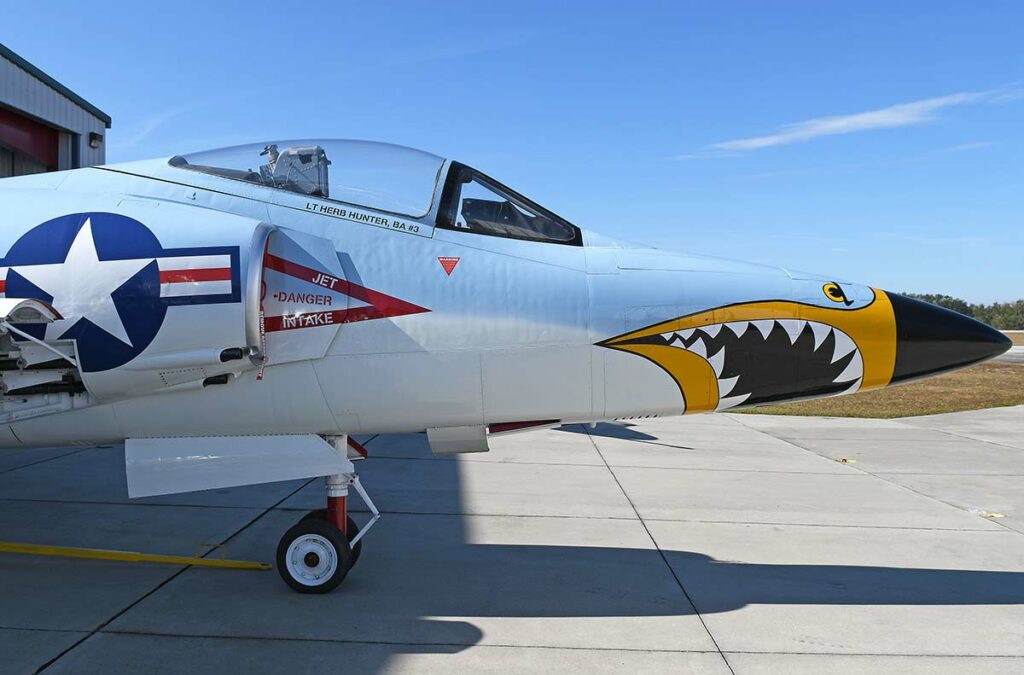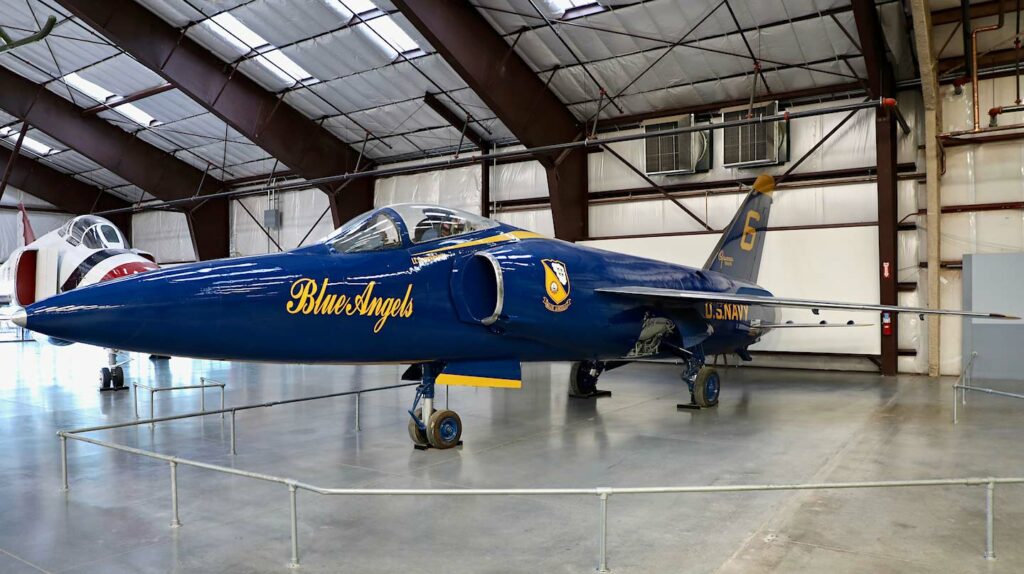The Grumman F11F / F-11 Tiger was a supersonic, single-seat, carrier-based fighter aircraft, known for its speed and agility.
In Brief
The Grumman F11F / F-11 Tiger, a U.S. Navy jet fighter, was introduced in 1956. Powered by a Wright J65-W-18 afterburning turbojet engine, the Tiger achieved a maximum speed of 750 mph and a service ceiling of 41,896 ft. With a length of 14.31 meters and a wingspan of 9.64 meters, it was armed with four 20mm Colt Mk 12 cannons and had provisions for AIM-9 Sidewinder missiles. The aircraft featured a swept-wing design and was capable of supersonic speeds, marking a significant advancement in naval aviation. Its design included full-span leading-edge slats, spoilers for roll control, and foldable wings for carrier operations.
The Grumman F11F / F-11 Tiger played an important role in the advancement of naval aviation, representing a leap in technology and performance for carrier-based fighters during the 1950s.

History of the Development of the Grumman F11F / F-11 Tiger
The development of the Grumman F11F Tiger began in 1952 as a modernization effort of the F9F Cougar. The aircraft underwent significant design changes, incorporating the area rule for improved performance at supersonic speeds. The Tiger’s maiden flight took place on 30 July 1954 with a non-afterburning engine, and it nearly reached Mach 1. The second prototype, equipped with an afterburning engine, became the second supersonic U.S. Navy aircraft.
Grumman proposed several models, including reconnaissance and trainer versions, and an advanced variant called the F11F-1F Super Tiger. The Super Tiger, equipped with a General Electric J79 engine, demonstrated superior performance but did not enter production due to limited interest from the U.S. Navy.
Design of the Grumman F11F / F-11 Tiger
The Grumman F11F / F-11 Tiger featured a swept-wing design with full-span leading-edge slats and spoilers for roll control, instead of conventional ailerons. The wings could be folded for carrier operations. The aircraft was powered by a Wright J65 turbojet engine, a license-built version of the British Armstrong Siddeley Sapphire. The Tiger’s design included a cylindrical fuselage and wings swept back at 35 degrees, providing good high-speed performance.
Performance of the Grumman F11F / F-11 Tiger
The Grumman F11F / F-11 Tiger’s performance was notable for its era. The Wright J65-W-18 afterburning turbojet engine enabled a maximum speed of 750 mph and a service ceiling of 41,896 ft. The aircraft had a range of 1,270 miles and a rate of climb of 5,130 ft/min. However, its performance was hampered by short range and reliability issues related to the J65 engine.
Variants of the Grumman F11F / F-11 Tiger
The main variants of the Tiger included the F11F-1 (single-seat fighter version), F11F-1P (proposed reconnaissance version), and F-11A (redesignated F11F-1 models after 1962). The F11F-1F “Super Tiger” was a proposed improved variant with two prototypes completed.

Military use and combat of the Grumman F11F / F-11 Tiger
The Grumman F11F / F-11 Tiger was operated by seven U.S. Navy squadrons and was used on seven carriers, including the USS Forrestal. It served as a frontline fighter for four years before being withdrawn from carrier duties in 1961 due to performance and reliability issues. The Tiger continued to be used for training and by the Blue Angels aerobatic team until 1968. The aircraft was never exported.
The Grumman F11F / F-11 Tiger, despite its short operational service life, marked a significant advancement in naval aviation during its time. Its development showcased the rapid progress in jet aircraft design and the increasing demands for carrier-based supersonic fighters. The Tiger’s legacy is remembered for its technological achievements and contributions to naval aviation history.
Back to the Fighter Jet section.